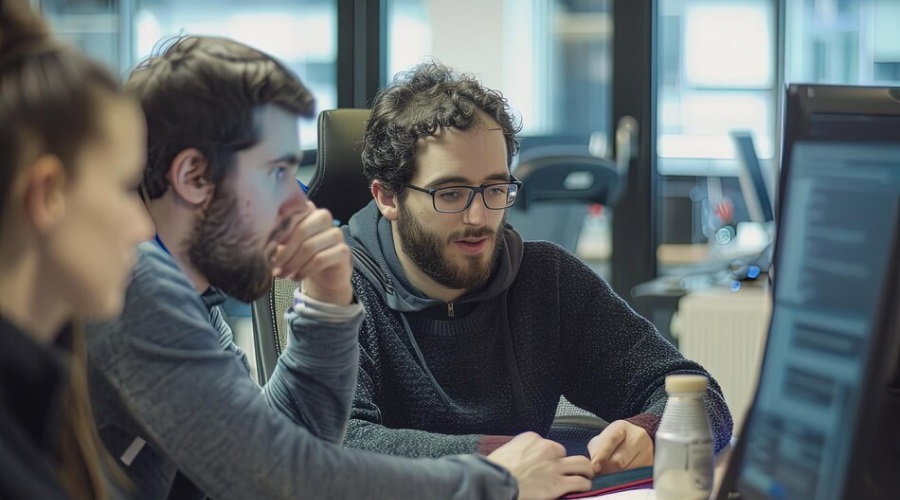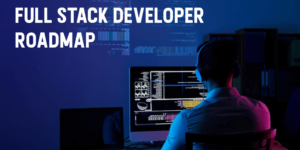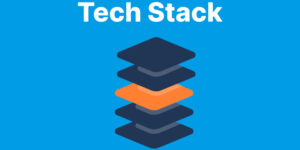
Among the many builders of digital innovation in the ever-changing tech scene of today are Full Stack Developers. Their skill covers the whole range of web development, fusing backend expertise with frontend elegance easily.
They are the cornerstones of project execution; they represent flexibility and inventiveness anywhere they are needed. Knowing the many roles and duties of Full Stack Developers is critical in this day of changing technology and increased need for diversified knowledge. Come explore the nuances of this vital function and the layers of adaptability that characterize their profession with us.
What is a Full Stack Developer?
An architect of the digital world, a full stack developer is skilled in both frontend and backend web application development. Having a broad skill set including many databases, frameworks, and programming languages, they are able to imagine, plan, and execute whole solutions. In addition to creating user-friendly interfaces and overseeing the server-side logic
Full stack developers move deftly across the whole development process. Their experience includes server-side technologies like Node.js, Python, or Ruby on Rails as well as client-side scripting languages like HTML, CSS, and JavaScript. They are, in short, the tech equivalent of Swiss Army knives, skilled at realizing digital ideas.
Roles of Full Stack Developers
1. Project Planning and Architecture Design
- Because they thoroughly grasp customer needs, full stack developers are essential to project start.
- Their translation of these needs into thorough technical specifications provides the foundation for the development process.
2. Front End Development
- Strong in UI/UX design concepts, Full Stack Developers produce aesthetically pleasing and intuitive user interfaces.
- By use of client-side scripting languages such as JavaScript, they provide dynamic and interactive online experiences.
- Their knowledge also includes making sure that different user devices and browsers work together.
3. Backend Development
- Full stack developers are in charge of server-side programming, which implements data processing and corporate logic.
- They effectively handle databases and include them for data storage and retrieval into the backend architecture.
- Another important part is API development, in which strong interfaces for communication between various software systems are designed and implemented.
4. Test and Debugging
- To guarantee best functionality and performance, they painstakingly test and debug programs.
- By quickly spotting and fixing problems, they preserve the software’s dependability and integrity.
5. Deployment and Maintenance
- By use of ongoing integration and deployment techniques, full stack developers optimize deployment procedures.
- Proactively monitoring apps, they solve any problems that might come up after deployment.
- They constantly work on performance optimization, polishing the program for scalability and efficiency.
Responsibilities of Full Stack Developers
1. Collaboration and Communication
- As cornerstones in cross-functional teams, full stack developers encourage cooperation among QA engineers, product managers, and designers.
- In order to guarantee alignment with project objectives, they actively interact with customers and include input into the development process.
- Knowledge exchange and documentation are prioritized, which help promote a culture of ongoing development and smooth transfer.
2. Problem Solving and Innovation
- Assigned to identify effective answers to technological problems, Full Stack Developers use their knowledge to creatively go beyond barriers.
- They keep up with new technologies and frameworks and provide creative fixes to improve project scalability and efficiency.
- By proactively seeing and resolving any problems, they reduce risks and guarantee seamless project development.
3. Learning and Development
- To stay competitive, full-stack developers prioritize constant skill set enhancement, industry trends, and best practice updates.
- By taking part actively in conferences, seminars, and training, they broaden their knowledge base and remain current.
- They take on the duty of mentoring younger developers, offering their knowledge, and directing the next wave of talent in their professional growth.
4. Time and Task Management
- Effortlessly setting priorities and streamlining processes to meet project deadlines without sacrificing quality are strengths of Full Stack developers.
- They must be able to multitask and manage their workload well in order to finish jobs precisely and effectively.
- It comes naturally for them to respond to shifting needs and priorities, enabling smooth changes to project dynamics while preserving productivity and concentration.
Challenges Faced by Full Stack Developers

✽ Balancing Depth and Breadth of Knowledge
- Full Stack Developers often struggle to keep up their knowledge of several technologies while also going deeply into certain areas.
- Striking a balance between the depth needed for mastery in certain subjects and the requirement for breadth of knowledge calls for smart prioritizing and ongoing education.
✽ Rapid Technological Advancements and Keeping Up-to-Date
- Because the computer industry is changing so quickly, Full Stack Developers are always having to keep up with new languages, frameworks, and tools.
- Rapid technical progress requires proactive learning, ongoing experimentation, and trend adaptability.
✽ Managing Project Complexity and Scope Creep
- Full Stack developers work on projects of all sizes and complexity, often negotiating complicated systems and many needs.
- Scope creep complicates project management and calls for cautious scope management, communication, and expectation setting.
✽ Dealing with Legacy Systems and Technical Debt
- For full stack developers, integrating with or modifying historical systems may be somewhat difficult because of antiquated technology and architectural patterns.
- Technical debt resulting from development concessions or shortcuts needs careful planning, reorganization, and prioritizing.
✽ Managing Ambiguity and Uncertainty in Requirements
- Uncertainty and misalignment may result from unclear or confusing project requirements that Full Stack Developers often deal with.
- When negotiating uncertainty, proactive stakeholder engagement, iterative feedback loops to explain requirements, and agile approaches to adapt to changing demands are all necessary.
Also Read: Detailed Roadmap to Become a Full-Stack Developer
Finally, in the always changing field of technology, the multidimensional function of Full Stack Developers embodies the core of flexibility. With their proficiency in both frontend and backend programming as well as their priceless communication, problem-solving, and time management abilities, they become useful assets in the digital sphere.
It is clear as we have peeled back the layers of their duties and responsibilities that they are the cornerstones of creativity, connecting vision to reality. With their unbounded adaptability, Full Stack Developers shape the future of technology by embracing the obstacles they encounter with tenacity and inventiveness.
FAQs
Q1. What is the typical career path for a Full Stack Developer?
Many times, before honing their abilities, full stack developers begin as frontend or backend developers. They might also move from allied fields like web development or software engineering.
Q2. How do Full Stack Developers stay updated with constantly evolving technologies?
By use of online classes, seminars, and conferences, they pursue ongoing education. To be informed about current advancements, they also join in coding groups, read industry blogs, and forums.
Q3. What difficulties do full stack developers have working remotely?
Working and communicating remotely could be difficult. In a remote setting, Full Stack Developers must overcome any timezone discrepancies, maintain productiveness, and guarantee efficient communication with customers and team members.
Q4. Are there specialized areas within Full Stack Development?
Indeed, some Full Stack Developers could focus on certain sectors or technologies. Their hobbies and professional objectives may lead them to concentrate on corporate systems, e-commerce platforms, or mobile app development, for instance.
Q5. How do Full Stack Developers balance between creativity and technical constraints?
They use their grasp of backend functionality as well as frontend aesthetics to combine technical viability with creative design. To guarantee match with project objectives, they also work closely with designers and other stakeholders.
Q6. What soft skills are essential for success as a Full Stack Developer?
To thrive in fast-paced team settings, Full Stack Developers need to be proficient in technical skills as well as in problem-solving, communication, and flexibility to changing needs.






